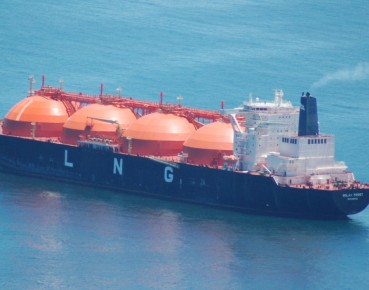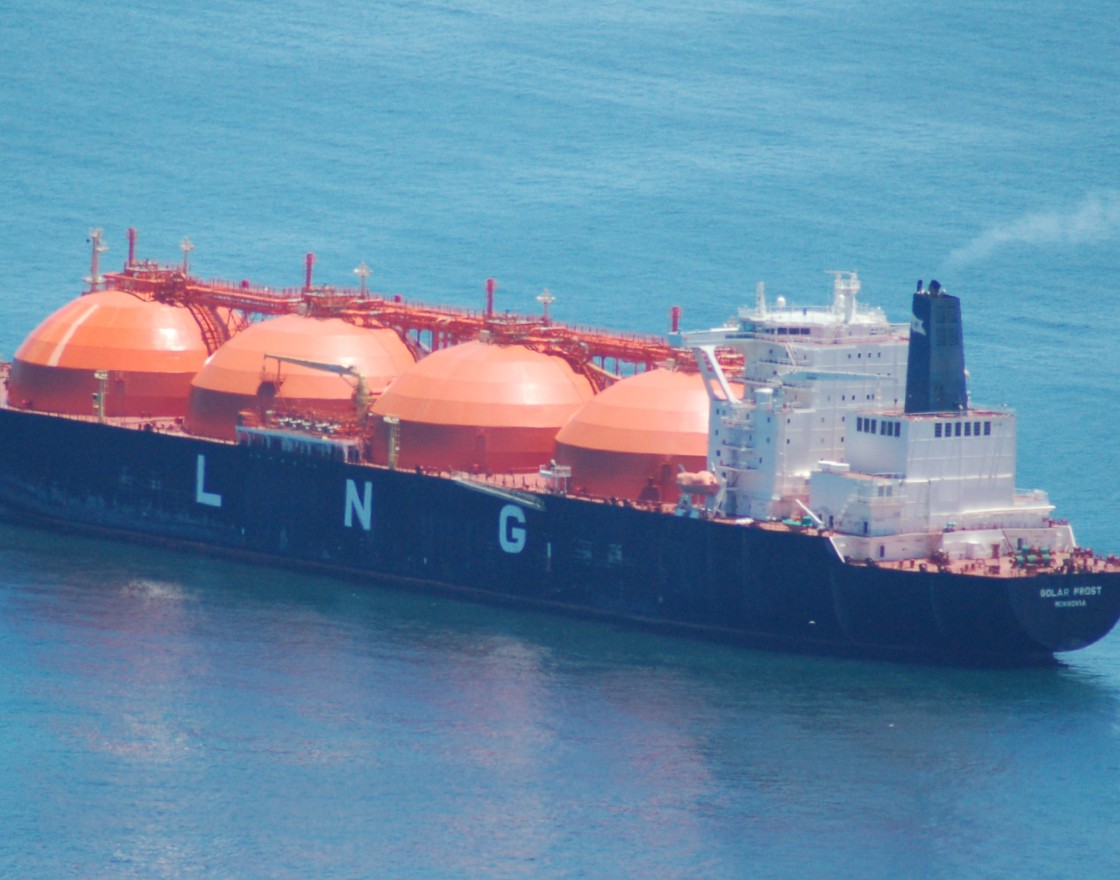
(Lens Envy, CC BY-NC-ND)
In March, Ukraine’s deputy minister of energy and environmental protection, Konstantyn Chyzhyk, announced Ukraine had signed a Letter of Intent with the Lafayette-based firm, Louisiana Natural Gas Exports (LNGE), whose CEO, Ben Blanchett, said the core of a possible long-term agreement has already been decided, with US LNG deliveries beginning at the earliest in 2023.
The first US cargo of LNG was delivered to the Kyiv-based importer ERU Trading, via Poland, in June 2017, and Poland, Ukraine and the US signed a separate trilateral memorandum on cooperation on LNG sales in 2019. However, the process appears to have gained additional momentum in the past several months.
Infrastructure
The key element of the proposed deal is securing gas infrastructure expansion in Poland and Ukraine, which remains a necessary condition to enable regular, large-scale supplies of the US-produced natural gas to Ukrainian customers. There is no spare regasification capacity in Poland (despite the expansion of the Swinoujscie LNG terminal), as all of the existing and to-be-brought-online capacities are already booked by Poland’s energy giant PGNiG. Moreover, the preexisting gas interconnector between Poland and Ukraine is not sufficient; its capacity is only 2 bcm per year, and flows can currently only move in one direction, to Ukraine.
LNGE has reportedly offered to fully finance the construction of a new gas interconnector between the two Central and Eastern European countries and is willing to invest around USD300m. Furthermore, the Louisiana gas producer is considering financing the “expansion of Polish regasification capacities.” A proposed 4 bcm floating storage regasification unit (FSRU) terminal project in Gdansk (to be brought online by Poland’s GAZ-SYSTEM by the end of 2025).
Pricing problems
The second main difficulty will be agreeing to a price formula between the Americans and Ukrainians. Ukraine’s Naftohaz appears to object to the US-proposed pricing formula. Naftohaz’s CEO, Andriy Kobolyev, has openly positioned himself as “skeptical” over the LNGE-proposed deal. Blanchett indicated that the US LNG price would be indexed to the Henry Hub natural gas price, which should make it competitive against spot supplies from the European TTF hub.
Naftohaz’s newly appointed COO, Otto Waterlander, has pointed to the inherent economic risk of a 20-year contract with no direct link to natural gas prices in Europe.
Over-supply?
“If Nord Stream 2 comes online as expected, the influx of supply into Europe could place further pressure on a U.S. LNG recovery in 2021,” BTU Analytics LLC energy analyst Connor McLean said. Last winter, Russia and Ukraine agreed on a new transit deal for about 6.3 billion cubic feet (Bcf)/d in 2020 that would step down to about 3.9 Bcf/d in 2021-24. If NS2 is completed by year end, the 2.4 Bcf/d step down in Ukrainian volumes becomes a moot point, as the new conduit would backfill the loss and provide space for Russia to increase flows by an incremental 2.9 Bcf/d. An additional 5.3 Bcf/d of low-cost Russian gas from NS2 would “surely overwhelm the European market,” Mr. McLean said, adding that the new volumes would likely displace existing sources of supply.
“Germany has more than 770 Bcf of storage capacity, ranking it only behind Ukraine in European gas storage capacity,” he added. Ukraine’s storage capacity is significantly larger at 1.1 Tcf. ”Excess supply from Russia being absorbed by storage in Germany would significantly hamper the ability for Europe to absorb excess LNG cargoes, predominantly from the US, as it has over the past two years,” Mr. McLean said.
“European storage is already in a precarious position requiring sustained cuts to US LNG to avoid reaching capacity,” Mr. McLean pointed and added “With Europe no longer able to serve as a sink for excess LNG, attention will once again turn to Asia where a resurgence in gas demand would be key for US LNG producers.”
Lower demand
Europe will take a smaller share of the US LNG exports over the coming decades as more heads to Asia-Pacific and South America, according to German economic research institute DIW. Europe could take around 30 per cent of overall US exports this year, DIW said. But the share falls to 20 per cent by 2030 in the institute’s base-case scenario, and slips further to 12 per cent by 2040 and just 2 per cent by 2050.
DIW expects outright US LNG deliveries to Europe to be broadly stable until at least 2030, but to fall subsequently even as the US’ aggregate exports continue to rise. It sees total US exports at 80-90 bcm this year, rising to 130-140 bcm in 2030 in the base-case scenario, 170-180 bcm in 2040 and above 220 bcm in 2050.
But a much larger share will be absorbed by other regions, especially Asia-Pacific, where demand is expected to rise considerably over the coming decades, DIW said. And the institute expects South America to substantially increase its take of US LNG from the 2030s.
Strong the US LNG shipments to Europe in 2019 and 2020 were „exceptions”, DIW said. Europe’s aggregate LNG receipts have climbed sharply since around the start of the 2018-19 winter. Additions to global liquefaction capacity — largely driven by new US projects coming on stream — outpaced demand growth elsewhere, bolstering deliveries into Europe.
With European production on track to fall in the coming decades, „natural gas will play a decreasing role because of Europe’s climate goals and the required reductions in emissions,” DIW said.


